-
 Bitcoin
Bitcoin $106,782.3966
-0.72% -
 Ethereum
Ethereum $2,406.7764
-1.16% -
 Tether USDt
Tether USDt $1.0005
0.02% -
 XRP
XRP $2.0918
-1.53% -
 BNB
BNB $644.5785
-0.17% -
 Solana
Solana $141.0925
-0.69% -
 USDC
USDC $1.0000
0.02% -
 TRON
TRON $0.2721
0.18% -
 Dogecoin
Dogecoin $0.1585
-1.26% -
 Cardano
Cardano $0.5497
-1.14% -
 Hyperliquid
Hyperliquid $35.8493
-1.58% -
 Bitcoin Cash
Bitcoin Cash $502.3089
2.20% -
 Sui
Sui $2.7092
3.87% -
 Chainlink
Chainlink $12.8551
-1.85% -
 UNUS SED LEO
UNUS SED LEO $9.0548
0.53% -
 Stellar
Stellar $0.2344
-0.85% -
 Avalanche
Avalanche $17.2676
-0.23% -
 Toncoin
Toncoin $2.8282
0.56% -
 Shiba Inu
Shiba Inu $0.0...01113
-1.14% -
 Litecoin
Litecoin $83.9593
-0.93% -
 Hedera
Hedera $0.1447
0.82% -
 Monero
Monero $306.9022
-2.07% -
 Bitget Token
Bitget Token $4.6358
3.42% -
 Dai
Dai $0.9999
0.01% -
 Ethena USDe
Ethena USDe $1.0001
0.02% -
 Polkadot
Polkadot $3.3211
0.06% -
 Uniswap
Uniswap $6.8775
0.75% -
 Pi
Pi $0.5664
-0.27% -
 Aave
Aave $256.0055
1.28% -
 Pepe
Pepe $0.0...09013
-3.24%
Is the high-level dark cloud cover combination a trend reversal signal?
The high-level dark cloud cover signals a potential bearish reversal in crypto, marked by a green candle followed by a red candle closing below the prior's midpoint, especially near resistance.
Jun 28, 2025 at 05:28 am
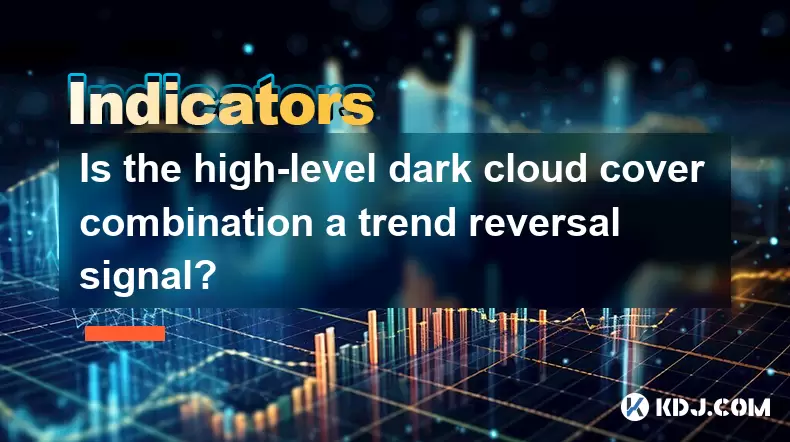
Understanding the High-Level Dark Cloud Cover Pattern
The high-level dark cloud cover is a well-known candlestick pattern that often appears at the end of an uptrend. This pattern typically signals a potential reversal from bullish to bearish sentiment in the market. In the context of cryptocurrency trading, where price movements can be highly volatile, understanding such patterns becomes crucial for traders seeking early signs of trend changes.
The formation consists of two candles:
- A strong bullish (green) candle, which continues the existing uptrend.
- A subsequent bearish (red) candle, which opens higher than the previous candle's close but then reverses sharply downward, closing below the midpoint of the prior candle.
This sudden reversal often indicates that sellers have begun to overpower buyers, even though the initial momentum appeared positive.
How to Identify the High-Level Dark Cloud Cover in Crypto Charts
To accurately identify this pattern on crypto charts, certain conditions must be met:
- The market should be clearly in an uptrend, with a series of higher highs and higher lows.
- The first candle is a large green candle, showing continued buying pressure.
- The second candle opens with a gap up, suggesting optimism among traders.
- However, the candle closes significantly lower — ideally below the 50% level of the previous candle’s body.
- There should be increased volume during the second candle to confirm stronger selling pressure.
These criteria help traders distinguish the high-level dark cloud cover from other similar patterns like the engulfing pattern or tweezer tops.
Why the High-Level Dark Cloud Cover Suggests a Possible Trend Reversal
In technical analysis, candlestick patterns reflect market psychology. The high-level dark cloud cover reflects a shift in control from bulls to bears. Here’s how:
- The first candle reinforces the existing bullish trend, giving confidence to buyers.
- The gap-up opening of the second candle suggests that bulls are still in charge.
- However, the sharp sell-off during the second candle shows that bears are stepping in aggressively, pushing prices back down.
When this occurs near resistance levels or after extended rallies, it becomes a more credible signal of a possible reversal. Traders often use this as a cue to take profits or initiate short positions.
Combining the High-Level Dark Cloud Cover with Other Indicators
While the high-level dark cloud cover is a powerful standalone signal, relying solely on one pattern can be risky. Therefore, traders often combine it with other tools:
- Moving Averages: If the pattern forms near a key moving average like the 50 or 200 EMA and prices fail to sustain above it, the reversal signal strengthens.
- RSI (Relative Strength Index): An RSI reading above 70 when the pattern forms indicates overbought conditions, reinforcing the likelihood of a pullback.
- Volume Analysis: A spike in volume on the second candle supports the strength of the bearish move.
- Fibonacci Retracement Levels: If the pattern appears near a major Fibonacci resistance level, it further confirms the potential for a trend change.
Using these tools together helps traders filter out false signals and increases the probability of successful trades.
Practical Application in Cryptocurrency Trading
Let’s walk through a practical scenario using the high-level dark cloud cover in a crypto trade:
- Suppose Bitcoin (BTC) has been rising steadily for several days, forming higher highs and higher lows.
- On the daily chart, a large green candle appears, continuing the uptrend.
- The next day, BTC gaps up and forms a red candle that closes deeply within the range of the previous green candle — meeting all the criteria of the high-level dark cloud cover.
- At the same time, RSI reaches 76, indicating overbought territory.
- Volume spikes significantly compared to recent sessions, confirming increased selling pressure.
A trader might interpret this as a strong bearish reversal signal and decide to:
- Close long positions or take partial profits.
- Place a stop-loss slightly above the high of the dark cloud cover formation.
- Consider entering a short position if the price breaks below the low of the second candle.
It’s essential to monitor how the price reacts in the following sessions to validate whether the reversal is genuine or a temporary correction.
Common Mistakes When Interpreting the High-Level Dark Cloud Cover
Traders often misinterpret or misuse this pattern due to common errors:
- Ignoring the context of the trend — the pattern only holds significance in an uptrend.
- Not checking for volume confirmation — a bearish candle without high volume may not indicate strong selling.
- Confusing it with similar patterns like the bearish engulfing or evening star.
- Applying it on very short timeframes (like 5-minute charts), where noise and false signals dominate.
Avoiding these pitfalls ensures that traders don’t act on weak or misleading signals.
Frequently Asked Questions
Q1: Can the high-level dark cloud cover appear in downtrends?
No, the high-level dark cloud cover specifically occurs in uptrends and serves as a bearish reversal signal. Seeing it in a downtrend would likely be a continuation or a false signal.
Q2: Is the high-level dark cloud cover reliable in sideways markets?
In ranging or sideways markets, this pattern tends to produce less reliable signals because there isn't a clear directional bias. It works best when used in confirmed trending environments.
Q3: How does the high-level dark cloud cover differ from the regular dark cloud cover?
The "high-level" version emphasizes that the pattern forms after a significant rally or at a resistance zone, increasing its importance as a reversal signal. The regular dark cloud cover may appear anywhere and carries less weight unless supported by context.
Q4: Should I always enter a trade immediately after spotting this pattern?
It's generally safer to wait for confirmation — such as a follow-through candle closing lower — before taking action. Immediate entries carry the risk of false reversals, especially in volatile crypto markets.
Disclaimer:info@kdj.com
The information provided is not trading advice. kdj.com does not assume any responsibility for any investments made based on the information provided in this article. Cryptocurrencies are highly volatile and it is highly recommended that you invest with caution after thorough research!
If you believe that the content used on this website infringes your copyright, please contact us immediately (info@kdj.com) and we will delete it promptly.
- Altcoin Exchange Flows Dip: Is an Incoming Rally Brewing?
- 2025-06-28 08:30:12
- Clanker Crypto: Everything You Need to Know About This 2025 Token Creation Tool
- 2025-06-28 08:30:12
- Bitcoin Price Check: Fresh Demand Needed to Break the Range
- 2025-06-28 08:50:12
- SoftBank's AI Gambit: Betting Big on Artificial Super Intelligence
- 2025-06-28 08:50:12
- Clementine Valentine's Coin Fountain Floor: A New York State of Mind
- 2025-06-28 09:30:12
- XRP, Cardano, and MAGACOIN FINANCE: Charting the Crypto Course in 2025
- 2025-06-28 09:50:12
Related knowledge
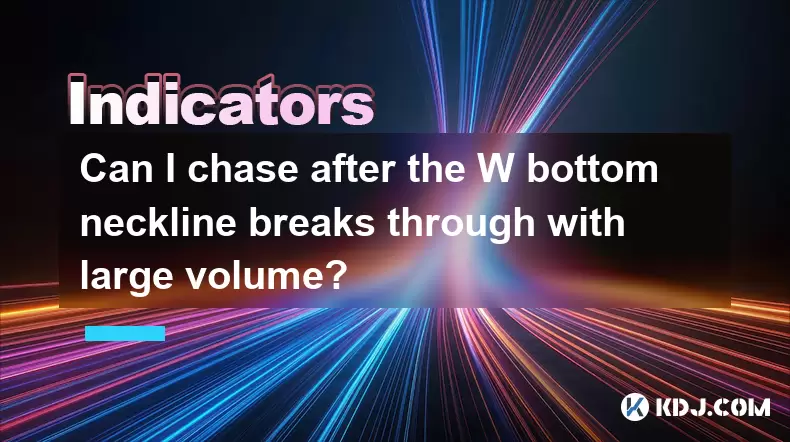
Can I chase after the W bottom neckline breaks through with large volume?
Jun 28,2025 at 07:28am
Understanding the W Bottom Pattern in Cryptocurrency TradingThe W bottom pattern is a common technical analysis formation used by traders to identify potential bullish reversals. In cryptocurrency markets, this pattern typically appears after a downtrend and signals that the selling pressure may be diminishing. The structure of the W bottom includes two...
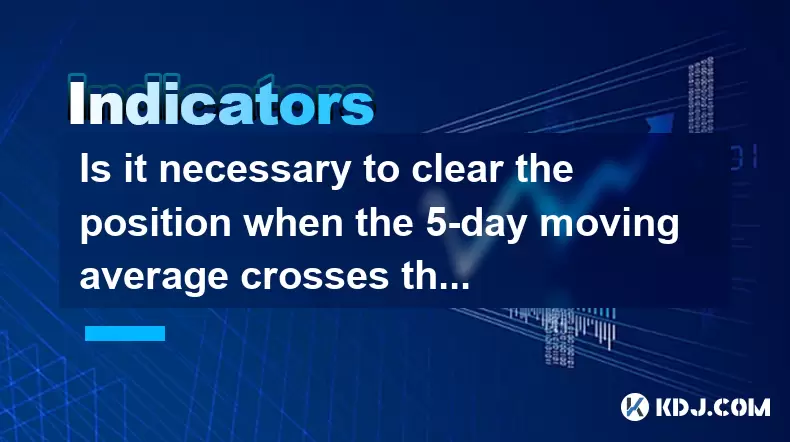
Is it necessary to clear the position when the 5-day moving average crosses the 10-day moving average?
Jun 27,2025 at 07:21pm
Understanding the 5-Day and 10-Day Moving AveragesIn the realm of technical analysis within the cryptocurrency market, moving averages play a crucial role in identifying trends and potential reversal points. The 5-day moving average (MA) and 10-day moving average are two of the most commonly used short-term indicators by traders. These tools smooth out ...
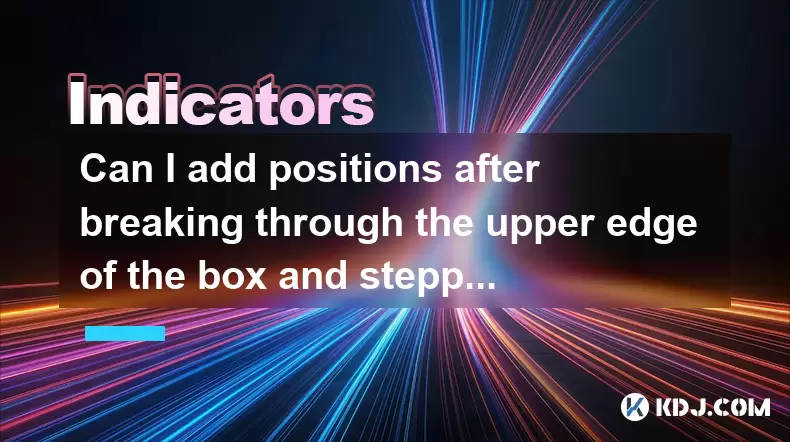
Can I add positions after breaking through the upper edge of the box and stepping back without breaking?
Jun 27,2025 at 09:56pm
Understanding the Box Breakout StrategyIn cryptocurrency trading, box breakout strategies are commonly used by technical analysts to identify potential price movements. A box, or a trading range, refers to a period where the price of an asset moves within two horizontal levels — the support (lower boundary) and resistance (upper boundary). When the pric...
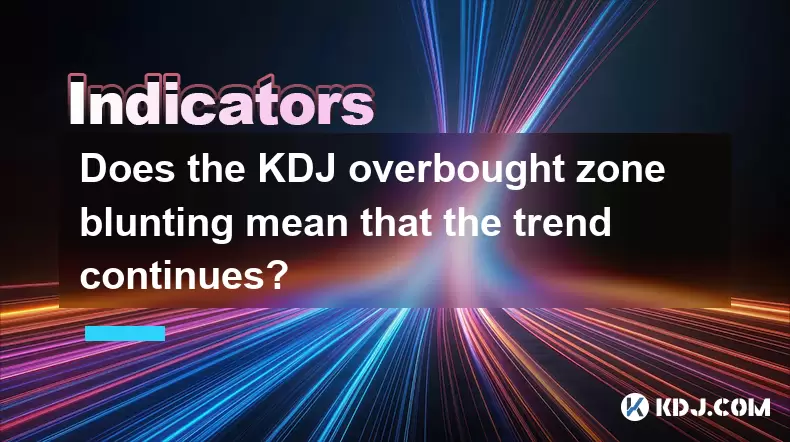
Does the KDJ overbought zone blunting mean that the trend continues?
Jun 27,2025 at 03:35pm
Understanding the KDJ Indicator in Cryptocurrency TradingThe KDJ indicator, also known as the stochastic oscillator, is a popular technical analysis tool used by traders to identify overbought or oversold conditions in asset prices. In the cryptocurrency market, where volatility is high and trends can change rapidly, understanding how to interpret the K...
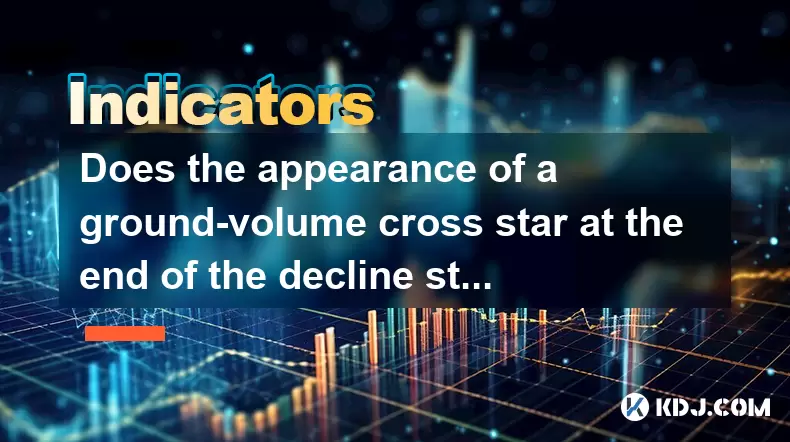
Does the appearance of a ground-volume cross star at the end of the decline stop the decline?
Jun 27,2025 at 10:35pm
Understanding the Ground-Volume Cross Star PatternIn technical analysis, candlestick patterns play a crucial role in identifying potential market reversals. One such pattern is the ground-volume cross star. This pattern typically appears at the bottom of a downtrend and is characterized by a small-bodied candle with long upper and lower shadows, accompa...

Is the high-level dark cloud cover combination a trend reversal signal?
Jun 28,2025 at 05:28am
Understanding the High-Level Dark Cloud Cover PatternThe high-level dark cloud cover is a well-known candlestick pattern that often appears at the end of an uptrend. This pattern typically signals a potential reversal from bullish to bearish sentiment in the market. In the context of cryptocurrency trading, where price movements can be highly volatile, ...

Can I chase after the W bottom neckline breaks through with large volume?
Jun 28,2025 at 07:28am
Understanding the W Bottom Pattern in Cryptocurrency TradingThe W bottom pattern is a common technical analysis formation used by traders to identify potential bullish reversals. In cryptocurrency markets, this pattern typically appears after a downtrend and signals that the selling pressure may be diminishing. The structure of the W bottom includes two...

Is it necessary to clear the position when the 5-day moving average crosses the 10-day moving average?
Jun 27,2025 at 07:21pm
Understanding the 5-Day and 10-Day Moving AveragesIn the realm of technical analysis within the cryptocurrency market, moving averages play a crucial role in identifying trends and potential reversal points. The 5-day moving average (MA) and 10-day moving average are two of the most commonly used short-term indicators by traders. These tools smooth out ...

Can I add positions after breaking through the upper edge of the box and stepping back without breaking?
Jun 27,2025 at 09:56pm
Understanding the Box Breakout StrategyIn cryptocurrency trading, box breakout strategies are commonly used by technical analysts to identify potential price movements. A box, or a trading range, refers to a period where the price of an asset moves within two horizontal levels — the support (lower boundary) and resistance (upper boundary). When the pric...

Does the KDJ overbought zone blunting mean that the trend continues?
Jun 27,2025 at 03:35pm
Understanding the KDJ Indicator in Cryptocurrency TradingThe KDJ indicator, also known as the stochastic oscillator, is a popular technical analysis tool used by traders to identify overbought or oversold conditions in asset prices. In the cryptocurrency market, where volatility is high and trends can change rapidly, understanding how to interpret the K...

Does the appearance of a ground-volume cross star at the end of the decline stop the decline?
Jun 27,2025 at 10:35pm
Understanding the Ground-Volume Cross Star PatternIn technical analysis, candlestick patterns play a crucial role in identifying potential market reversals. One such pattern is the ground-volume cross star. This pattern typically appears at the bottom of a downtrend and is characterized by a small-bodied candle with long upper and lower shadows, accompa...

Is the high-level dark cloud cover combination a trend reversal signal?
Jun 28,2025 at 05:28am
Understanding the High-Level Dark Cloud Cover PatternThe high-level dark cloud cover is a well-known candlestick pattern that often appears at the end of an uptrend. This pattern typically signals a potential reversal from bullish to bearish sentiment in the market. In the context of cryptocurrency trading, where price movements can be highly volatile, ...
See all articles























































































